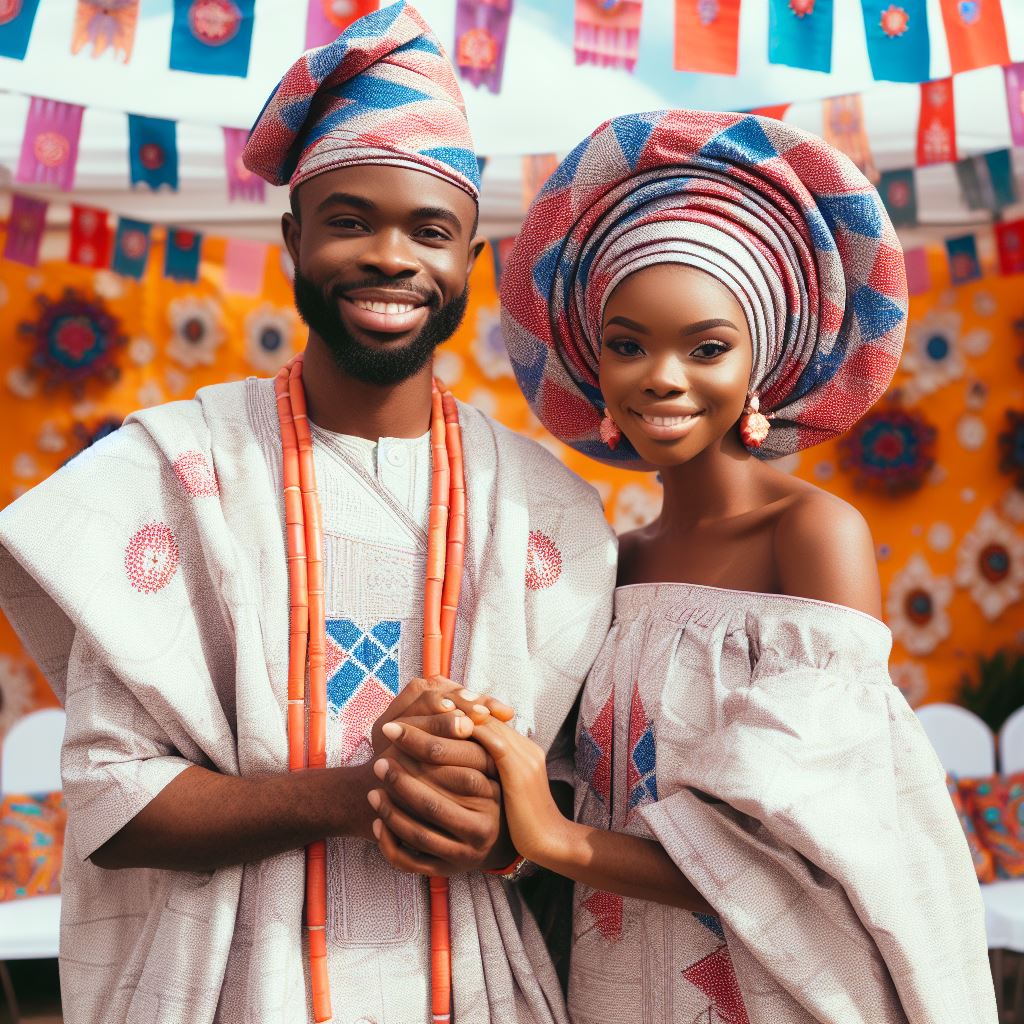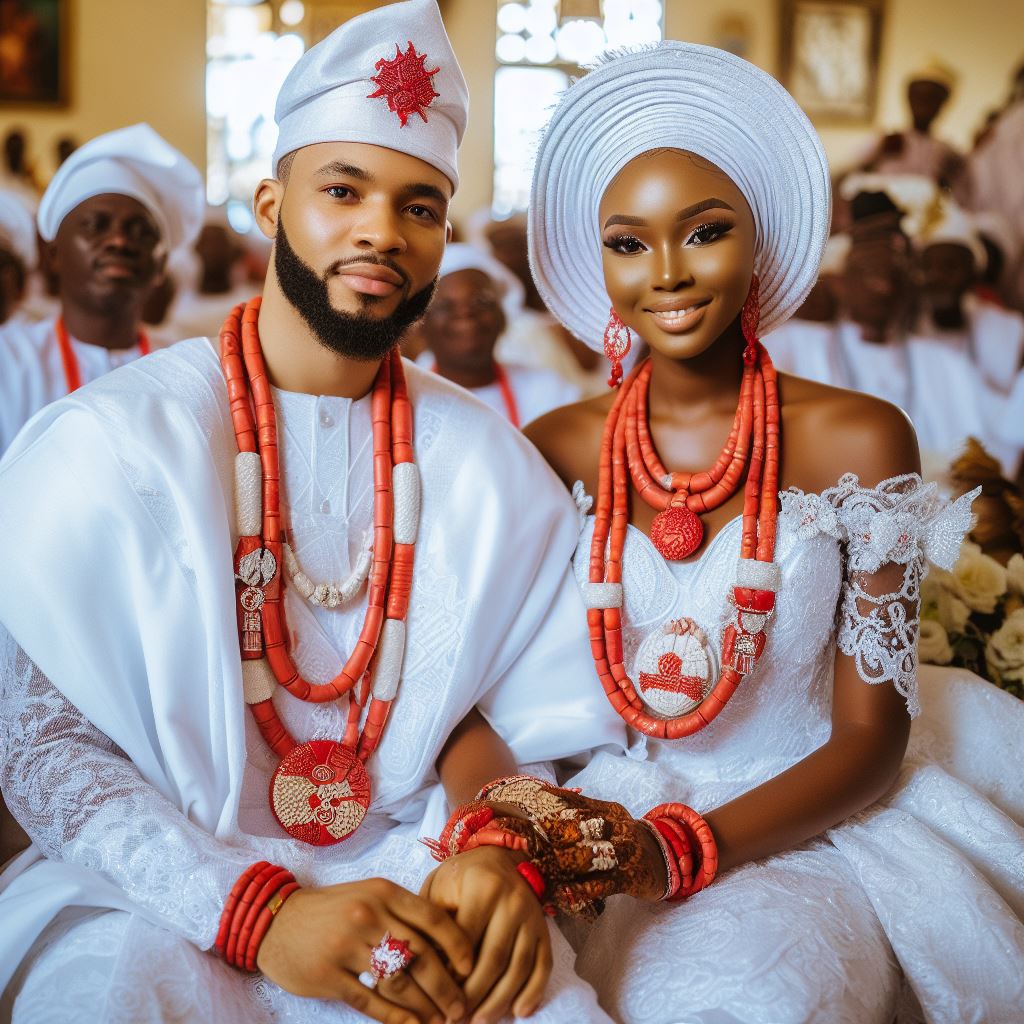Introduction
Topic of marriage traditions in the Old Testament
Marriage traditions in the Old Testament hold historical and cultural significance.
Importance and relevance of studying these traditions
Studying these traditions sheds light on the social norms and values of ancient societies.
Unlocking the secrets of ancient cultures, we delve into the marriage traditions of the Old Testament, a tapestry woven with timeless wisdom.
- Introduction to the Topic: A journey into the annals of time reveals marriage traditions that shaped the lives of Old Testament communities.
- The Significance of Studying Old Testament Marriage Traditions:
- Understand the cultural context.
- Gain insights into societal norms.
- Unearth the roots of contemporary marriage practices.
- Understand the cultural context.
- Cultural Context: In the Old Testament, marriage was not merely a union; it bore the weight of social, religious, and familial significance.
- Societal Norms:
- Marriage was a covenant.
- It symbolized unity and commitment.
- It ensured the continuity of family lineage.
- Marriage was a covenant.
- Roots of Contemporary Practices:
- Trace the origins of wedding ceremonies.
- Explore the concept of marital commitment.
- Recognize the interplay between faith and matrimony.
- Trace the origins of wedding ceremonies.
- Relevance Today: Studying these traditions provides a lens into the foundations of our current marital customs and fosters a deep appreciation for the evolution of human relationships.
- Conclusion: As we embark on this exploration, let’s unravel the intricate threads of Old Testament marriage traditions, discovering lessons that resonate across the ages.
Marriage Traditions in the Old Testament
- In the Old Testament, marriage traditions and practices were an integral part of the ancient Hebrew society.
- These customs shaped their views on relationships and laid the foundation for their social structure.
- Understanding these traditions can provide valuable insights into the customs of that era and highlight the differences compared to modern times.
1. Various Marriage Traditions and Practices
- The ancient Hebrews followed several marriage traditions and practices described in the Old Testament.
- Parents frequently initiated arranged marriages, actively seeking appropriate partners for their children in a common practice.
- To maintain purity and avoid mingling with foreigners, marriages were frequently arranged within the same tribe or clan.
- It was not uncommon for a man to marry multiple wives, especially if his first wife was unable to bear children.
- The process of betrothal was significant in Old Testament marriages. It involved the exchange of gifts between the groom and the bride’s family as a symbol of commitment.
- After the betrothal, a waiting period was observed before the actual wedding ceremony.
2. Significance of Marriage Traditions
- These marriage traditions held immense significance in shaping the ancient Hebrew society.
- Arranged marriages helped maintain social order, tribal identity, and prevented the dilution of their culture.
- The institution of marriage in the Old Testament was not only about romantic love but also served practical purposes.
- It ensured the continuation of the family lineage, provided security, and facilitated the division of inheritance among the heirs.
- Marriage was considered sacred and a covenant between a man, a woman, and God.
- This belief emphasized the importance of fidelity and commitment in marriage, and divorce was only permitted in cases of adultery.
3. Differences Compared to Modern Times
- Marriage customs in the Old Testament greatly differ from those in modern times. Today, marriage is primarily based on personal choice and romantic love, rather than arranged by parents or elders.
- Monogamy is the prevalent norm in modern marriages, whereas polygamy was accepted in the Old Testament. The practice of having multiple wives is no longer common or legally sanctioned in most societies.
- Furthermore, the role of women has significantly evolved over time. In ancient Hebrew society, women had less agency and were often treated as property. Modern marriages promote equality and mutual respect between partners.
- Divorce has also become more acceptable in modern times due to changing societal norms and legal regulations.
- Unlike in the Old Testament, divorce is not limited to cases of adultery and can be sought for various reasons.
The various marriage traditions and practices in the Old Testament played a critical role in shaping the ancient Hebrew society.
They provided stability, preserved cultural identity, and emphasized the importance of commitment and fidelity.
While the customs of the Old Testament differ significantly from modern times, understanding these traditions allows us to appreciate the progress made in terms of individual choice, gender equality, and personal freedom in the institution of marriage.
Read: Monogamy in Nigerian Society: Changing Perceptions
Marriage as a Covenant
Concept of marriage as a covenant in the Old Testament
In the Old Testament, the concept of marriage is portrayed as a sacred covenant between a man and a woman.
Religious and cultural aspects associated with this belief
- This belief is deeply rooted in both religious and cultural aspects of the ancient Israelite society.
- Marriage was not merely a legal contract or a social arrangement, but a divine covenant established by God Himself.
- It was a mutual commitment that involved solemn promises, obligations, and responsibilities between the husband and wife.
- According to the Old Testament, marriage as a covenant was meant to be permanent and unbreakable.
- Divorce was generally discouraged, and adultery was considered a grave sin against God and the spouse.
- Through the marriage covenant, God intended to establish a sacred bond between husband and wife, mirroring His covenant with His people.
This belief influenced how marital relationships were perceived and carried out in ancient Israel.
- Firstly, the idea of marriage as a covenant emphasized the importance of faithfulness and loyalty within the relationship.
- Spouses were expected to faithfully honor their commitments, remaining devoted and loyal to each other throughout their lives.
- Infidelity was not only an act of betrayal but also a violation of the sacred covenant with God.
- Secondly, the concept of marriage as a covenant promoted mutual respect and equality between spouses.
- The covenant regarded both husband and wife as equal partners, each possessing distinct roles and responsibilities within it.
- The husband held the role of household leader, and the wife served as a companion and helper in the family.
- Both partners were to provide mutual support and care, working together to uphold their shared covenant and maintain their unity.
- Thirdly, the marriage covenant in the Old Testament provided a solid foundation for family and societal stability.
- It established a framework for nurturing robust, healthy family units, viewed as vital for community well-being.
- By honoring the covenant, couples could maintain harmony within their marriages and in turn promote social cohesion.
How the idea of marriage as a covenant influenced marital relationships
- Furthermore, the belief in marriage as a covenant placed a strong emphasis on the significance of spiritual and emotional connection.
- Marriage was not solely a physical union but a bond that encompassed every aspect of a couple’s lives.
- It called for a deep intimacy and mutual support, enabling the spouses to grow and flourish together.
- The covenantal nature of marriage influenced conflict resolution, shaping how couples managed disagreements and maintained their commitment.
- The commitment to the covenant required spouses to seek reconciliation and resolution, putting aside personal differences for the greater good of the relationship.
In summary, the concept of marriage as a covenant in the Old Testament had profound religious and cultural significance.
It shaped the understanding of marital relationships, promoting faithfulness, mutual respect, and the establishment of stable families.
By viewing marriage as a sacred covenant, ancient Israelites recognized the divine institution of marriage and the importance of honoring God’s design for marital harmony.
Read: Nigerian Traditional Prayers for a Blissful Marriage Journey

Arranged Marriages
Arranged marriages were widely prevalent in the Old Testament, reflecting the cultural norms of that time.
Ancient societies deeply embedded these unions within their social and religious fabric, shaping their cultural and spiritual identity.
Prevalence of Arranged Marriages in the Old Testament
- Arranged marriages were the predominant form of marital union in the Old Testament.
- Individual choice was secondary to the desires and decisions of the parents.
- Marriage was viewed as a social contract rather than a matter of personal affection.
- Parents or guardians typically arranged marriages in the Old Testament, negotiating and finalizing these unions.
- The marriage agreement included a bride price or dowry, which served as a form of compensation or security for the bride’s family.
Cultural Significance of Arranged Marriages
- In ancient times, arranged marriages were a means to strengthen alliances between families and tribes.
- Marriages were often arranged to preserve social status, wealth, and lineage.
- They believed arranged marriages improved the odds of finding a virtuous and suitable spouse.
- In modern times, arranged marriages may appear foreign and outdated, but these practices were integral to the Old Testament’s culture and religion.
- They served as a means to establish and maintain social harmony, clan unity, and the preservation of familial traditions.
Factors and Considerations in Arranging Marriages
- Family background and reputation played a vital role in choosing suitable partners.
- In certain cases, marriages were arranged solely based on economic considerations.
- Religious beliefs and compatibility were essential factors taken into account.
- The consent of the bride and groom was not always necessary for the marriage to take place.
- Often, the prospective bride’s opinion went unconsidered in the decision-making process, and her wishes played a minimal role.
While arranged marriages in the Old Testament lacked the emphasis on romantic love and personal choice that characterizes modern unions, they played a significant role in shaping the course of biblical history.
Ancient Hebrews saw these marriages as essential for fulfilling religious duties within what they believed was God’s divine plan.
It is important to approach the subject of arranged marriages in the Old Testament with cultural sensitivity and a recognition of the historical context in which these unions took place.
Understanding the prevalence, reasons, and considerations involved in arranged marriages provides valuable insights into the social dynamics and customs of ancient societies.
Read: Marriage in Nigeria: More Than Just a Word or Ceremony?
See Related Content: Tradition Meets Modernity: Nigerian Wedding Quotations
Polygamy and Concubinage in the Old Testament: Acceptance, Reasons, Cultural Significance, and Impact
Polygamy and concubinage found wide acceptance in the Old Testament due to cultural norms and the pursuit of status and power.
The reasons behind these practices and their cultural significance played a significant role in shaping the institution of marriage during that time.
1. Acceptance of Polygamy
Polygamy, the marriage of one man to multiple women, was socially acceptable in ancient Israelite society. It was seen as a sign of wealth, power, and status.
2. Reasons behind Polygamy
There were several reasons why polygamy was practiced. Firstly, it was a way to increase the size of the family and ensure the continuation of the lineage.
Additionally, it provided economic advantages as each wife brought her own dowry, resources, and labor.
3. Cultural Significance of Polygamy
The ancient Israelites deeply rooted polygamy in their cultural practices, associating it with masculinity and royal families or tribal leaders.
It also served as a means of forming and strengthening alliances between tribes and families.
4. Impact of Polygamy on Marriage
Polygamy had a profound impact on the institution of marriage in the Old Testament. It created a complex family structure that often led to rivalry, jealousy, and conflict among wives.
This, in turn, affected the overall stability of the marriage and family unit.
5. Acceptance of Concubinage
The Old Testament widely accepted concubinage, where a man could have a secondary wife or female companion with his primary wife.
Ancient practice involved obtaining concubines through means like war, purchase, or as gifts, as part of social norms.
6. Reasons behind Concubinage
Concubinage served various purposes. It provided companionship and sexual satisfaction to men, especially when their primary wife was unable to conceive.
It was also a means of expanding one’s influence and power through alliances with other tribes or wealthy families.
7. Cultural Significance of Concubinage
Wealthy and powerful figures, including kings and tribal leaders, commonly maintained concubines as symbols of prosperity and status, signifying their wealth and virility.
8. Impact of Concubinage on Marriage
Concubinage had a significant impact on the institution of marriage in the Old Testament.
It created a hierarchical structure within the family, with the primary wife holding a superior position over the concubines. This often led to conflicts and tensions within the household.
Polygamy and concubinage gained acceptance in the Old Testament due to cultural norms and aspirations for status and power.
However, these practices also had negative consequences, such as jealousy and conflicts within the family unit.
Despite their acceptance, these practices ultimately challenged the ideals of monogamous marriage and had a significant impact on the institution of marriage during that time.
Read: The Power of Prayer in Strengthening Nigerian Marriages
Delve into the Subject: Roles and Responsibilities: Navigating Marriage Biblically
Divorce and Remarriage
Old Testament’s views on divorce and remarriage
Cultural norms in ancient Hebrew society influenced the Old Testament’s perspectives on divorce and remarriage.
Divorce was permitted in the following cases
- Divorce found allowance in certain cases, including adultery or acts of sexual immorality, as justifications for the separation.
- Remarriage after divorce was permissible, but societal attitudes varied.
Consequences and social implications of divorce and remarriage in ancient Hebrew society
- Divorce had significant consequences both for the individuals involved and their broader social networks.
- In ancient Hebrew society, divorce could lead to social ostracism and negative reputations.
- Divorce could stigmatize children and lead to societal challenges they had to face.
- Women faced particular challenges after divorce, as they had limited economic and social support.
- Remarriage offered the possibility of financial security and social acceptance for divorced individuals.
- Remarriage often required the involvement of a go-between or mediator to negotiate terms and ensure societal approval.
- The Old Testament discourages hasty divorces and encourages reconciliation and forgiveness.
- Under certain circumstances, a husband was obligated to provide a certificate of divorce to his wife.
- In the Old Testament, divorce and remarriage addressed broken relationships and allowed individuals to find new partners.
- In the Old Testament, marriage was seen as a lifelong commitment, and divorce was not considered ideal.
- Families primarily arranged marriages to ensure compatibility and establish connections between tribes or clans.
- Divorce had implications for inheritance, property rights, and the social standing of individuals involved.
- Within the Old Testament, there is a tension between the ideals of marriage and the reality of divorce.
- Divorce was not a casual decision, and its social implications were taken seriously.
- The Old Testament reflects a nuanced understanding of the complexities of divorce and remarriage.
- It recognizes the need for compassion and empathy towards individuals going through marital difficulties.
- The cultural context of ancient Hebrew society influenced their views on divorce and remarriage.
Conclusion
Summary of the main points discussed in the blog post
- By exploring these ancient traditions, we gain a deeper understanding of the complexities and challenges of marriage.
- We can learn the value of commitment, communication, and mutual respect in our own relationships.
- Additionally, this serves as a reminder of marriage’s foundation in consent, equality, and compassion within the institution.
Lessons and insights we can learn from studying marriage traditions in the Old Testament
In studying marriage traditions in the Old Testament, we have learned several key insights.
- First, marriage was seen as a sacred covenant, emphasizing commitment and faithfulness.
- Second, the role of women in marriage was significant, with their consent being crucial.
- Third, polygamy was a common practice, but it was not without its problems.
- Fourth, although permitted, divorce was actively discouraged, underscoring the significance of resolving challenges within the marriage
- Finally, the Old Testament provides a foundation for understanding the sacredness and purpose of marriage in our lives today.
- Reflecting on Old Testament lessons inspires us to assess our marriage beliefs and practices.
- This compels us to reflect on how our actions and attitudes influence our relationships and society at large.
- Marriage is not simply a private matter; it has profound implications for the well-being and flourishing of individuals and communities.
Thought-provoking statement or call to action for further exploration of this topic
In the end, the study of marriage traditions in the Old Testament offers us timeless wisdom and insights for navigating the complexities of modern relationships.
It challenges us to continuously strive for love, commitment, and understanding in our marriages.
Let us delve deeper into this topic, exploring its cultural, historical, and theological dimensions to gain further wisdom and enrich our own relationships.




